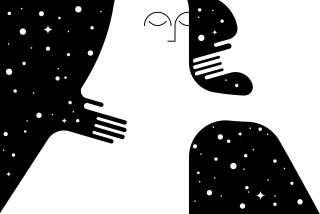Syndromes for Us All
- Share via
In the mid-18th century, German physician Franz Anton Mesmer held salons in which he employed what he called animal magnetism--a form of hypnosis--to cure the depression of melancholia. As word of Mesmer’s success spread through Europe, melancholia became near-epidemic among the wealthy.
On the eve of the 21st century, diagnosis of a mental health condition called attention deficit disorder (ADD) has grown at an equally fast clip. Between 1990 and 1995, diagnoses more than doubled, while prescriptions for Ritalin, the principal drug used to treat it, quadrupled. While part of the rise owes to sharper diagnoses, it’s also likely that popular books played a role. John J. Ratey’s and Edward M. Hallowell’s 1994 best-seller “Driven to Distraction,” for instance, defines ADD so loosely that it can apply to both adults who have difficulty focusing at work and impulsive kids who fidget in class. The authors also contend that “distractible and creative” historical figures, from Mozart to Einstein, suffered from ADD.
Now comes “Shadow Syndromes,” a new book by Ratey and Catherine Johnson, arguing that millions more Americans suffer from a sort of halfway mental illness called “shadow syndrome.” Such a person might have three or four symptoms of a recognized disorder like depression that is usually defined by 10 or so symptoms. The work of Ratey and other media-savvy psychiatrists has sensitized doctors to previously underdiagnosed syndromes like “subclinical autism,” a neurological condition that, while often missed in clinical tests, can impair one’s ability to grasp the subtleties of human relationships. Popularizers have also introduced the sensible concept that mental illnesses exist on a continuum, with varying degrees of severity.
But it can be argued that the criteria for many mental illnesses are already too loose and broad. About all you need to qualify for “hypomania,” for example, are periods of elevated mood, confidence and energy. Ratey’s “shadow syndromes” could further loosen these criteria.
Science is some help. Discovery of the biological markers for some serious mental illnesses aids physicians in deciding appropriate medical intervention. Psychiatric diagnosis, however, still relies largely on patients’ own perceptions.
Ultimately, we must marshal ourselves to distinguish illnesses requiring treatment from challenges requiring effort and the trials of life demanding endurance.






